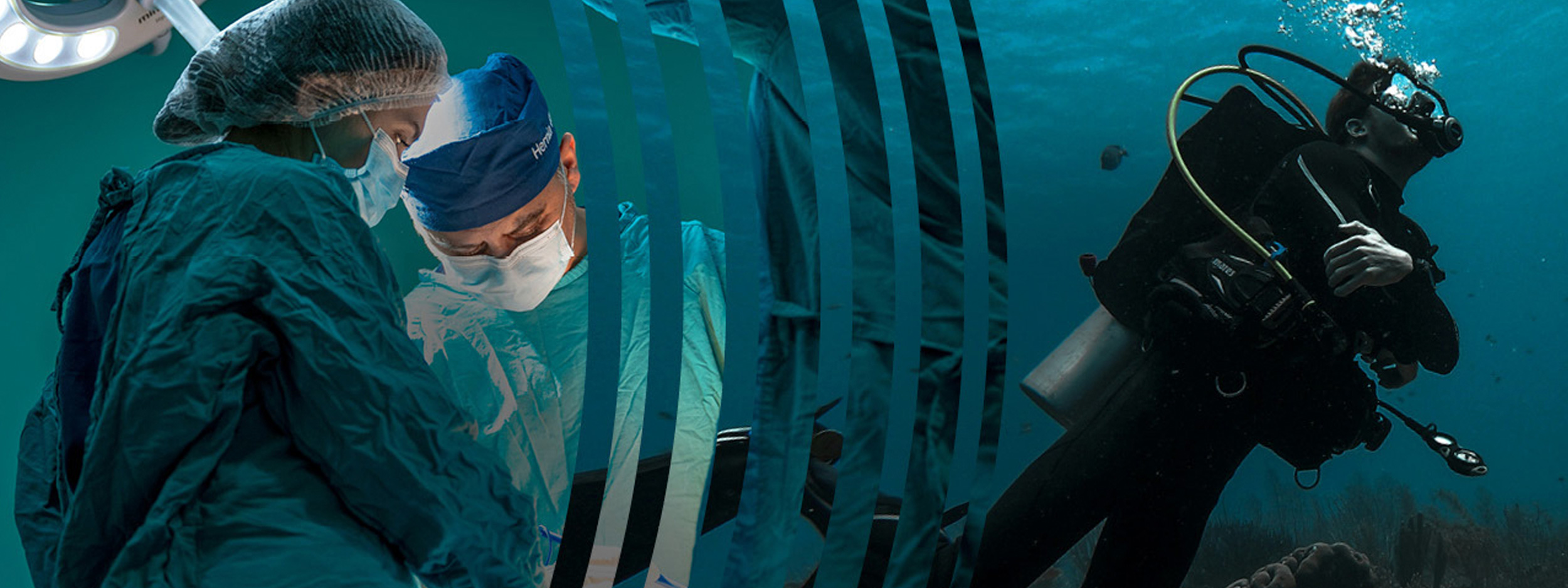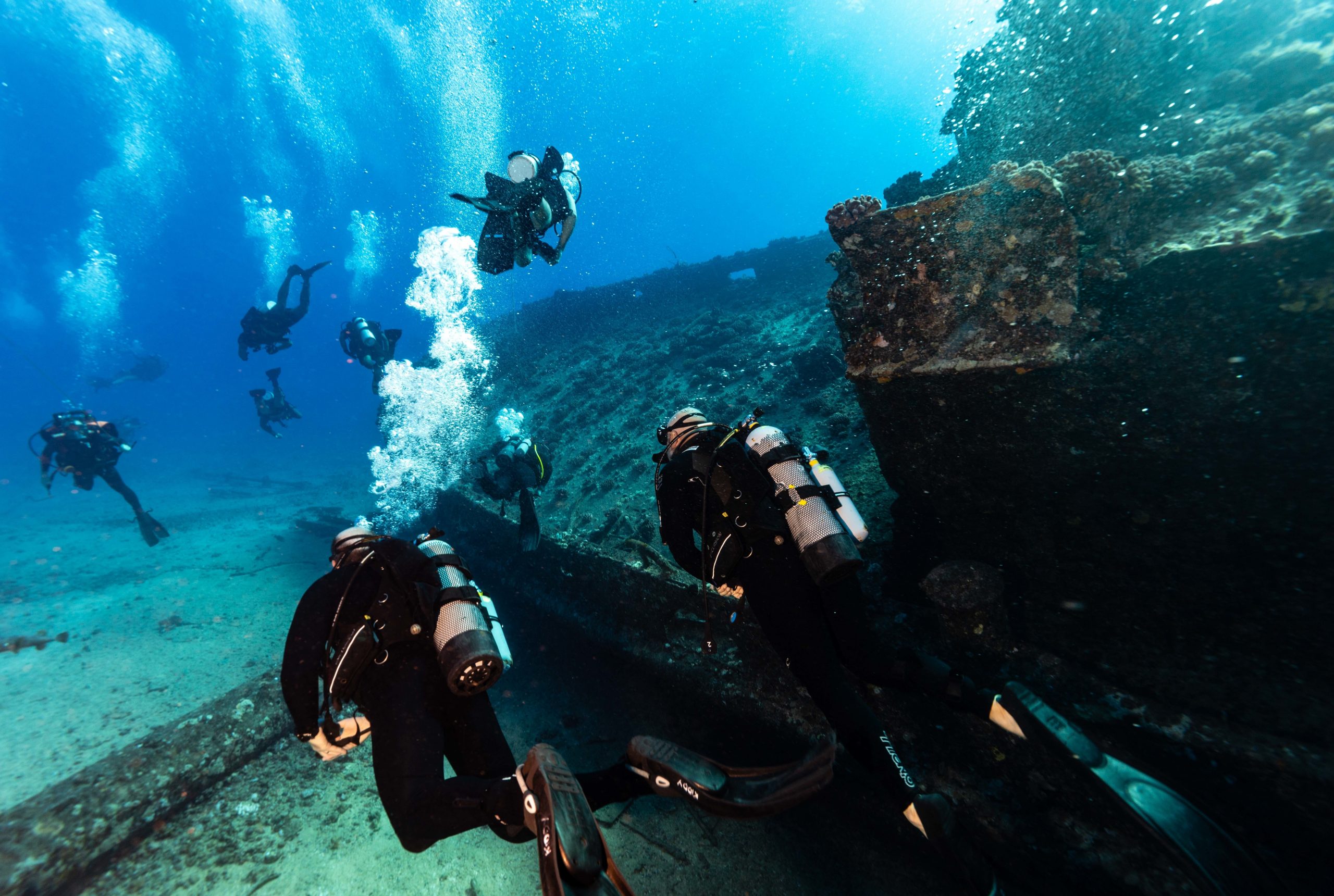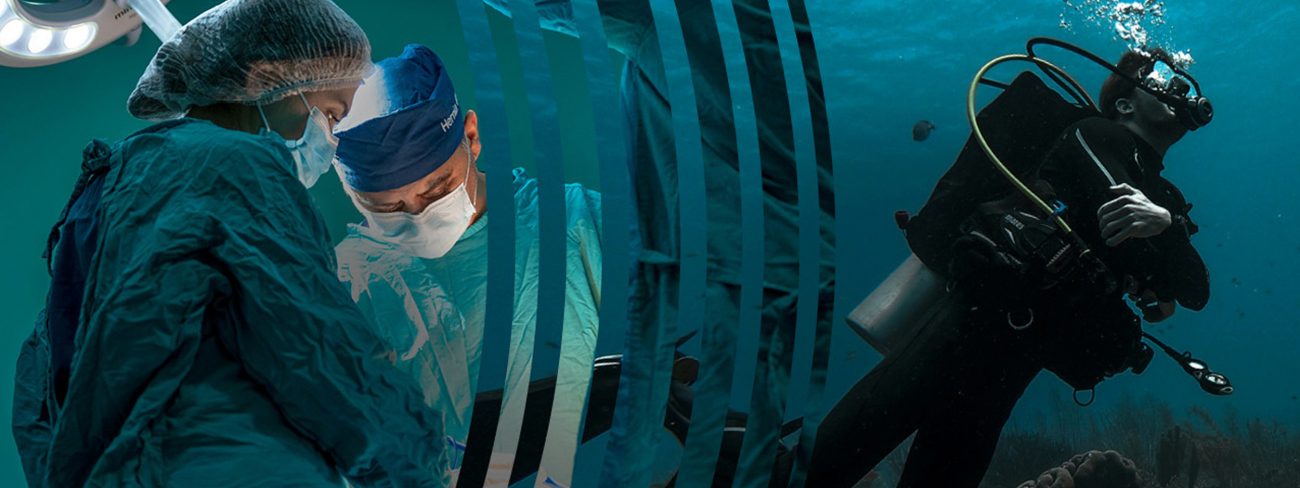From Detecting Patients' Pain to Saving Divers' Lives
Can Innovations in the OR Help Divers on the Sea Floor?

From Detecting Patients' Pain to Saving Divers' Lives
Can Innovations in the OR Help Divers on the Sea Floor?
Scientists at UConn are investigating how a sensor they developed to help oral surgeons gauge patients’ pain levels could be used to predict seizures in deep-sea divers — a significant health concern for the U.S. Navy. The technology is widely adaptable and has the potential to detect other types of problems before they cause damage, from neuropathy in diabetics to fatigue in surgeons.
Ki Chon, Board of Trustees Distinguished Professor and Krenicki Chair professor of biomedical engineering, in collaboration with Hugo Posada-Quintero, assistant professor of biomedical engineering, and his graduate student are using $1.5 million in Phase I and Phase II STTR grant funding from the Department of Health and Human Services to work on a new application of their novel electrodermal activity (EDA) sensor technology to predict seizures in underwater environments.
Navy SEAL divers and submariners breathe hyperbaric oxygen (HBO2), pressurized pure oxygen, during underseas operations. Prolonged exposure to HBO2 can lead to oxygen toxicity, which can cause seizures and other complications.
Chon and his team have long investigated quantitative methods of measuring the activity of the sympathetic nervous system, which registers pain and other health events, such as seizures.
When Chon was a postdoctoral researcher at the Massachusetts Institute of Technology, existing non-invasive methods could not separate the sympathetic nervous system (which controls the fight-or-flight response) from the parasympathetic nervous system (which controls everyday processes like digestion and bringing the body back to a resting state).
“These work in parallel,” Chon says. “But you need to separate out sympathetic and parasympathetic because pain, for example, invokes the sympathetic system. So, you use that to better quantify the amount of pain you’re feeling.”
Given this challenge, researchers had begun to investigate the potential of EDA sensors, which use signals from the skin to quantify activity in the sympathetic nervous system.
“It makes sense because human skin is only innervated by the sympathetic nerves,” not the parasympathetic ones, Chon says.
The EDA device consists of a small circuit and a series of electrodes that can measure sympathetic system activity in real time. Chon and his team have developed and applied for a patent on an algorithm that could better characterize this response, providing more consistent and accurate responses than traditional EDA data interpretation methods.
“The innovation is the analysis that we have, and how we process the data and measure pain quantitatively,” says Chon. “That’s the potential.”
The sensors not only provide surgeons with a more accurate measurement of patient pain than subjective patient self-reports, but they also help overcome communication challenges for young children, patients with disabilities, and patients with language barriers.
Chon and Professor of Endodontics Dr. I-Ping Chen in 2020 received a grant from the National Institutes of Dental and Craniofacial Research (NIDCR) to miniaturize Chon’s sensors for gauging patient pain during diagnostic tests and root canals.
The sensors have the potential to better assess dental pain compared to subjective patient self-reports, especially for patients with communication challenges including young children, patients with disabilities, and patients with language barriers. The ultimate goal is that patients will be able to wear the sensors and use the app to measure post-surgical pain from home, allowing dentists to monitor levels and assign the right painkiller, says Chen.
The Naval diver project follows Chon’s finding that, using his algorithm, the sensors could also predict seizures. In a study using rats exposed to HBO2, the sensors detected a seizure on average two minutes before either the EEG measurement or an expert viewing a video of the rat.
Those few minutes can make a huge difference for divers and submariners, as they could allow someone to be warned and return safely to the surface before the seizure starts.
“One minute is certainly a significant time in advance to warn them,” Chon says. “That’s something we’re very excited about, and the Navy’s very excited about.”
Other potential applications for this widely adaptable platform technology include socks to detect neuropathy damage to peripheral nerves) in patients with diabetes or cancer-induced neuropathy. This application could be linked to patients’ smartphones and provide an early warning, allowing them to seek treatment before they potentially lose their foot.
“There are a lot of applications because the sympathetic, as well as parasympathetic, nervous systems are implicated in many types of diseases,” Chon says. “There’s a host of problems you could go after.”

Big ideas come from out of the blue.
Behind every breakthrough, there’s a story of creativity and commitment. One where individuals come together, fueled by a shared vision and sustained by imagination and persistence.



